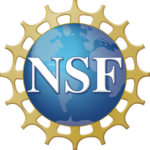Treating computers like we would our own bodies, let’s diagnose and “cure” our computer issues.
Introduction
This three lesson module has two major goals. In the first lesson students will learn about the various hardware and software components of a computer and how they work together. The latter parts of the module will introduce the concept of troubleshooting: how to work through problems. This means to try different things, to know when a problem can be solved on one’s own, and to know when to ask for help.
Tying these educational goals together with culture, we make metaphoric parallels between computers and the human body. We encourage students to make connections between how their body functions, breathes, sees, and hears, to the way computers use fans, cameras, and microphones.
Computers, just like humans, get “sick”. When computers are not working properly, how can we “cure” them? What do we do when we have a sore throat? What does our Mom do and how is that different from another student’s family? Keep these metaphors in mind when teaching these lessons and bring out the local culture and uniqueness of the students problem solving skills.
Student Objectives
- Explain what a system is and describe examples of systems
- Distinguish the difference between hardware and software
- Identify external and internal components of a computer
- Define and demonstrate the process of troubleshooting
- Draw comparisons between troubleshooting technology and everyday problem solving scenarios
- Distinguish problems that can be solved on their own and problems that require help from peers or adults
- Demonstrate various troubleshooting techniques through creative outlets
- Identify different sources of computer problems and demonstrate critical thinking to resolve these problem
CSTA K-12 CS Standards
| Standard | Description |
| 1B-CS-01 | Describe how internal and external parts of computing devices function to form a system. |
| 1B-CS-02 | Model how computer hardware and software work together as a system to accomplish tasks. |
| 1B-CS-03 | Determine potential solutions to solve simple hardware and software problems using common troubleshooting strategies. |
Nā Hopena Aʻo (Hā)
| Standard | Description |
| Belonging | “I stand firm in my space with a strong foundation of relationships. A sense of Belonging is demonstrated through an understanding of lineage and place and a connection to past, present, and future. I am able to interact respectfully for the betterment of self and others.”
|
| Responsibility | “I willingly carry my responsibility for self, family, community and the larger society. A sense of Responsibility is demonstrated by a commitment and concern for others. I am mindful of the values, needs and welfare of others.”
|
| Excellence | “I believe I can succeed in school and life and am inspired to care about the quality of my work. A sense of Excellence is demonstrated by a love of learning and the pursuit of skills, knowledge and behaviors to reach my potential. I am able to take intellectual risks and strive beyond what is expected.”
|
| Aloha | “I show care and respect for myself, families, and communities. A sense of Aloha is demonstrated through empathy and appreciation for the symbiotic relationship between all. I am able to build trust and lead for the good of the whole.”
|
| Total Well-being | “I learn about and practice a healthy lifestyle. A sense of Total Well-being is demonstrated by making choices that improve the mind, body, heart and spirit. I am able to meet the demands of school and life while contributing to the wellbeing of family, ‘āina, community and world.”
|
| Hawai‘i | “I am enriched by the uniqueness of this prized place. A sense of Hawai‘i is demonstrated through an appreciation for its rich history, diversity and indigenous language and culture. I am able to navigate effectively across cultures and communities and be a steward of the homeland.”
|
Funding Note

This work was supported by the National Science Foundation’s
Division of Research on Learning (Grant #2122874).
This module was created and evaluated by Kaimana Namihira, Christopher Pike, and Sawyer Novak.
Please contact aCRC808@hawaii.edu or visit https://coe.hawaii.edu/acrc/ for any inquiries.
